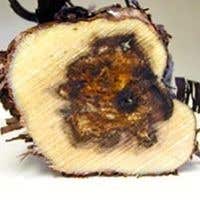Purple Pager Michael Alberty of Oregon recently had the chance to meet up with Paolo de Marchi of Isole e Olena and quiz him on esca (see A possible cure for esca? to understand why). Here is his reaction.
Wow. Paolo de Marchi is such an amazing mix of education, experience and passion. I learned a lot in my two visits with him here in Portland. As far as esca goes, here's what I found out:Paolo thinks esca has probably always been present in Chianti but it didn't really show itself that much in healthy plants. He blames two factors for its escalation: the transition away from a sharecropper economy in Chianti and the big frost of 1985. He says that when Chianti transitioned away from the sharecropper economy they lost a lot of people that had expertise when it came to pruning the vines. He finds a lot of poor pruning techniques these days and that means lots of microcuts/injuries and the vines become susceptible to esca. The big frost also created a lot of microcut damage. This was his response when I asked him about esca seemingly having more of an impact on older vines than on younger vines.
He began experimenting with the trichoderma fungus in 2000. But he says the cultures came from New Zealand, not Israel. One year he would get good results, the next year, not so much. Given the extra work and expense of buying the cultures and drilling holes in the vines, he eventually abandoned the effort. During that time the University of Florence reviewed his data and also found the trichoderma wanting.
These days he's excited about the work going on at the Guillaume commercial nursery in France. They are selling vines that are already inoculated with trichoderma and they seem promising. They are more expensive but Paolo has begun working with them. He claims they are also providing some protection against mildew and botrytis.
